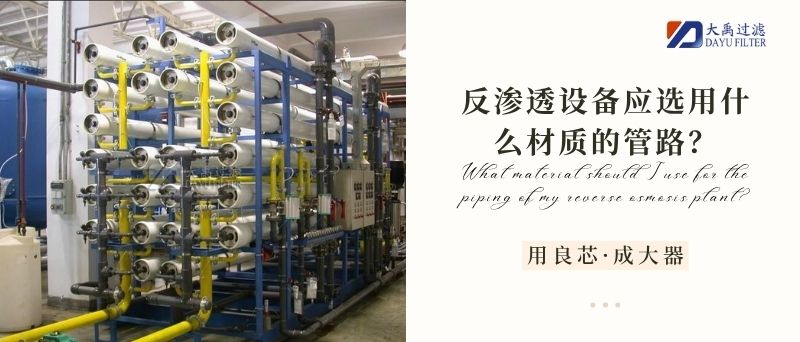Reverse osmosis equipment pipeline material selection, to consider the internal and external issues, the internal is the corrosion of water quality on the pipeline, the external is the operating environment. Reverse osmosis equipment operating environment to determine the external corrosion of the pipeline, if the operating environment is better, the general use of surface coating (such as paint or galvanized, etc.) can be. Water quality corrosion of the pipeline to consider residual chlorine, chemicals, PH value, temperature, etc..
Stainless steel piping
The basic advantage of stainless steel is that it has good resistance to general corrosion, stainless steel rarely produces current corrosion and stress corrosion damage, but stainless steel is prone to pitting and crevice corrosion, pitting corrosion represents the metal is subjected to localized erosion, resulting in sunken holes in its surface, and chlorine ions attack the bare metal to form pitting corrosion if the chromium oxide passivation layer is destroyed. Crevice corrosion is associated with pitting caused by a small handful of still water in small holes, on gasket surfaces, around deposits, and in cracks under screws. In order to avoid the occurrence of pitting and crevice corrosion of the membrane system high-pressure piping, it is recommended as follows:
General water sources, you can choose 304 stainless steel:
1, the raw water salt content of 2-5000PPM, it is recommended to use the 316 stainless steel with a carbon content of less than 0.08%;
2, the raw water salt content of 5-7000PPM, it is recommended to use the 316L stainless steel with a carbon content of less than 0.03%;
3, the raw water Salt content in 7-30000PPM, it is recommended to use 904L stainless steel with molybdenum content of 4%-5%.
316 stainless steel is after 304, the second widely used steel, mainly used in the food industry and surgical equipment, adding molybdenum to obtain a special structure of corrosion resistance. SS316 is commonly used in nuclear fuel recovery devices.
UPVC pipe
UPVC pipe characteristics are as follows:
1, strong corrosion resistance: compared with the general cast iron pipe, galvanized pipe, PVC pipe has a strong corrosion resistance, can resist strong acid, strong alkali, will not rust and scale. Do not worry about the use of “red water” phenomenon.
2, small fluid resistance: PVC pipe wall is very smooth. Its surface roughness coefficient is only 0.009, fluid resistance is very small, will not excessively reduce water pressure.
3, high mechanical strength: water with UPVC pipe has good water pressure, impact resistance, tensile strength, at room temperature can be 110 atmospheric pressure for 1 hour without rupture.
4, health and non-toxic: water supply UPVC pipe with a unique green environmentally friendly lead-free formulation system instead of the traditional composite lead salt formulation system, which will not damage the water quality, affect human health.
5, light weight, easy to install and construct: PVC pipe density of one-fifth of the general cast iron, easy to move the loading and unloading. And the use of special adhesive paste or elastic sealing joints, installation and construction is simple and fast.
6, the temperature performance of the water supply pipe: water supply UPVC pipe temperature range, room temperature is good. Temperature is low, brittleness increases, unfavorable installation and construction; temperature is high, tensile strength decreases, water pressure resistance performance decreases.
7, good watertight: 15 minutes after the adhesive bonding, bonding strength can reach 12.5 / C or more, after many years of use will not have a significant decline, and the elastic seals at the joints of the sealing ring, but also with the PVC pipe has a considerable life, no aging leakage concerns.




